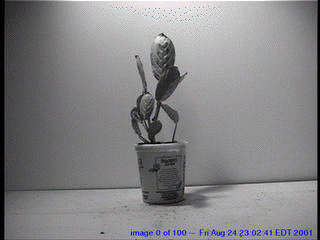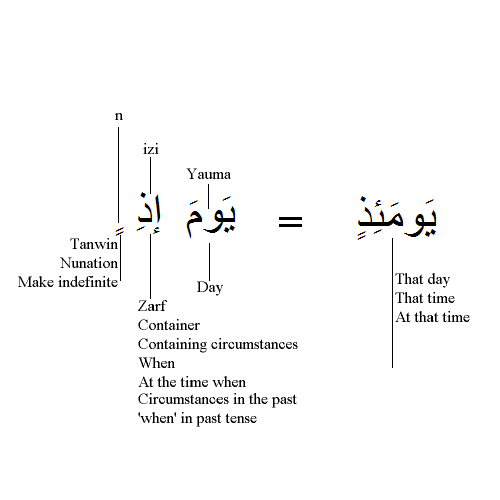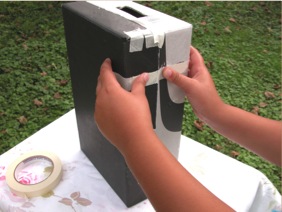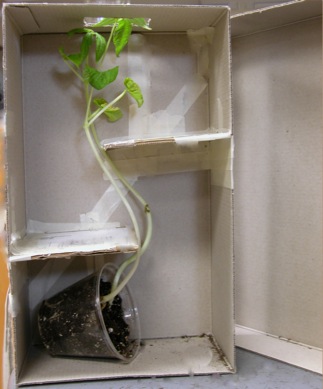والنظر المقرون بـ " إلى " مضافاً إلى الوجه لا يكون إلاَّ الرؤية، فالله تعالى يخلق الرؤية في وجوههم في الجنة على قَلْبِ العادة، فالوجوه ناظرة إلى الله تعالى.
ويقال: العين من جملة الوجه فاسم الوجه يتناوله.
ويقال: الوجهُ لا ينظر ولكنَّ العينَ في الوجهِ هي التي تنظر؛ كما أنَّ النهرَ لا يجري ولكنَّ الماءَ في النهر هو الذي يجري، قال تعالى:
{ جَنَّاتٍ تَجْرِى مِن تَحْتِهَا الأَنْهَارُ }
[البقرة: 25].
Dara
The Arab had sensitivity towards the statement “Faces glancing” since in their language the face does not see rather the eye sees!
This concern of the Arab guided the Rahi (Author) towards the concept of the Phototropism that indeed like the apex of the plants that has a light sensitive organ issuing the signals for the plant to bend towards the light, the Faces in plural is indeed that very apex a true spiritual faculty (a unit) created by incredibly exotic and rare material that houses the de novo organ of specialized eyes glancing towards Allah.
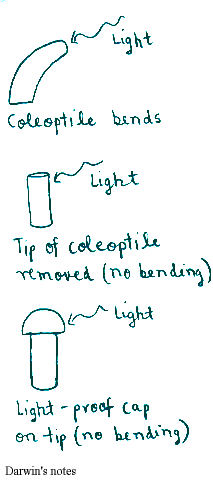
We cannot help but cognize that this glancing is indeed of Phototropic nature and the 'Faces indeed an apex that motions towards the Nur (Divine Light) for the Eyes of humanity to see Allah and none else.
See Also:
http://www.youtube.com/watch?v=zctM_TWg5Ik&feature=related
The Arab had sensitivity towards the statement “Faces glancing” since in their language the face does not see rather the eye sees!
This concern of the Arab guided the Rahi (Author) towards the concept of the Phototropism that indeed like the apex of the plants that has a light sensitive organ issuing the signals for the plant to bend towards the light, the Faces in plural is indeed that very apex a true spiritual faculty (a unit) created by incredibly exotic and rare material that houses the de novo organ of specialized eyes glancing towards Allah.

We cannot help but cognize that this glancing is indeed of Phototropic nature and the 'Faces indeed an apex that motions towards the Nur (Divine Light) for the Eyes of humanity to see Allah and none else.
See Also:
http://www.youtube.com/watch?v=zctM_TWg5Ik&feature=related
Her Lord
75:22. Faces, that-day, Nādhiratun (Verdant)
75:23. Glancing towards ‘her’ Lord
Although the ‘Faces’ is in plural form, its pronoun ‘her’ is used referring to it in female singular form:
1. The above mentioned spiritual apex of the Faces is a single-unit female-form detecting and moving the humanity towards the Nur (Divine Light)
2. If you cut off the apex of ANY plant then it no longer motion towards the light and will not grow to bear its flowers and fruits, and similarly if you cast out the woman from the humanity then the man cannot move and grow towards the Nur (Divine Light) and shall be marooned within the darkness of his own Wujud (Being).
3. This singular form of usage for ‘her’ is indeed an indication that there is no individuation when it comes to THAT DAY in Qidam (Space of all Actualities) when the humanity glances towards Allah away and free from all veils and intermediaries.

